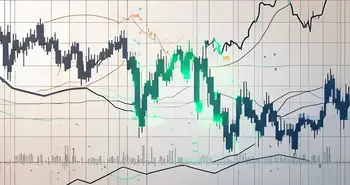Essential Strategies for Smooth Trading in the Forex Market

As a seasoned Forex trader with over a decade of experience in the field, I've learned that the key to success in this volatile market is a combination of knowledge, strategy, and discipline. Today, I'll share with you the essential strategies that have helped me navigate the Forex market smoothly and profitably.
Understanding the Basics of Forex Trading
Before diving into strategies, it's crucial to understand the basics of Forex trading. The Forex market, short for foreign exchange market, is where currencies are traded. It's the largest and most liquid market in the world, with an average daily trading volume exceeding $5 trillion.
Forex trading involves buying one currency while simultaneously selling another. This is done in currency pairs, such as EUR/USD (Euro/US Dollar). The first currency in the pair is the ‘base' currency, and the second is the ‘quote' currency. The price of the pair indicates how much of the quote currency is needed to buy one unit of the base currency.
Understanding Currency Pairs
There are three types of currency pairs: majors, minors, and exotics. Majors are the most traded pairs and include currencies from the world's largest economies. Minors are less traded and do not include the US dollar. Exotics are pairs that include a currency from an emerging or smaller economy.
Each pair has its own characteristics and requires a different trading approach. For example, majors tend to be less volatile and have tighter spreads than exotics. Understanding these differences can help you choose the right pairs to trade.
Developing a Trading Strategy
Now that we've covered the basics, let's move on to strategies. A trading strategy is a set of rules that guide your trading decisions. It should be based on careful analysis and tailored to your trading style, risk tolerance, and financial goals.
There are many different trading strategies, but they can generally be classified into four main types: trend trading, swing trading, scalping, and position trading. Each has its own advantages and disadvantages, and what works best will depend on your individual circumstances and preferences.
Trend Trading
Trend trading is a strategy that involves following the market's direction, either up or down. This strategy is based on the idea that ‘the trend is your friend' and aims to profit from buying low and selling high in an uptrend, or selling high and buying low in a downtrend.
One personal advice I can give from my years of trading is to always have a clear exit strategy when trend trading. I once held onto a losing position for too long, hoping the trend would reverse. It didn't, and I ended up with a significant loss. Since then, I always set a stop loss to limit my risk.
Swing Trading
Swing trading is a strategy that aims to capture gains in a stock or currency pair over a period of a few days to several weeks. Swing traders use technical analysis to look for stocks or currencies with short-term price momentum.
Swing trading can be profitable, but it requires a lot of time and attention. You need to monitor the markets closely and be ready to act quickly when opportunities arise. It's not a strategy I would recommend for beginners or those with limited time.
Managing Risk
Risk management is a crucial part of any trading strategy. No matter how good your strategy is, there will always be losses. The key is to manage these losses so they don't wipe out your profits.
There are several ways to manage risk in Forex trading. These include setting a stop loss, diversifying your portfolio, and only risking a small percentage of your capital on each trade.
Setting a Stop Loss
A stop loss is an order to sell a security when it reaches a certain price. It's designed to limit an investor's loss on a security position. Setting a stop loss is a simple and effective way to manage risk, and I highly recommend it to all traders.
Remember the story I shared about holding onto a losing position? If I had set a stop loss, my loss would have been limited. It was a hard lesson, but it taught me the importance of risk management.
FAQs
What is Forex trading?
Forex trading involves buying one currency while simultaneously selling another. This is done in currency pairs, such as EUR/USD (Euro/US Dollar).
What are the different types of trading strategies?
There are many different trading strategies, but they can generally be classified into four main types: trend trading, swing trading, scalping, and position trading.
How can I manage risk in Forex trading?
There are several ways to manage risk in Forex trading. These include setting a stop loss, diversifying your portfolio, and only risking a small percentage of your capital on each trade.
In conclusion, successful Forex trading requires a solid understanding of the basics, a well-developed trading strategy, and effective risk management. With these essential strategies, you'll be well on your way to smooth and profitable trading in the Forex market.
Ready to elevate your Forex trading experience? Embrace the future with Morpher, the revolutionary platform that's redefining the trading landscape. With Morpher, you can trade Forex alongside stocks, cryptocurrencies, and zero fees. Benefit from fractional investing, short selling without interest fees, and up to 10x leverage to maximize your trades. Plus, enjoy the safety of a non-custodial wallet and the innovation of blockchain technology. Sign up now and start your journey with a free sign-up bonus, unlocking a world where trading is democratized, accessible, and infinitely more exciting.

Disclaimer: All investments involve risk, and the past performance of a security, industry, sector, market, financial product, trading strategy, or individual’s trading does not guarantee future results or returns. Investors are fully responsible for any investment decisions they make. Such decisions should be based solely on an evaluation of their financial circumstances, investment objectives, risk tolerance, and liquidity needs. This post does not constitute investment advice.

Painless trading for everyone
Hundreds of markets all in one place - Apple, Bitcoin, Gold, Watches, NFTs, Sneakers and so much more.

Painless trading for everyone
Hundreds of markets all in one place - Apple, Bitcoin, Gold, Watches, NFTs, Sneakers and so much more.









